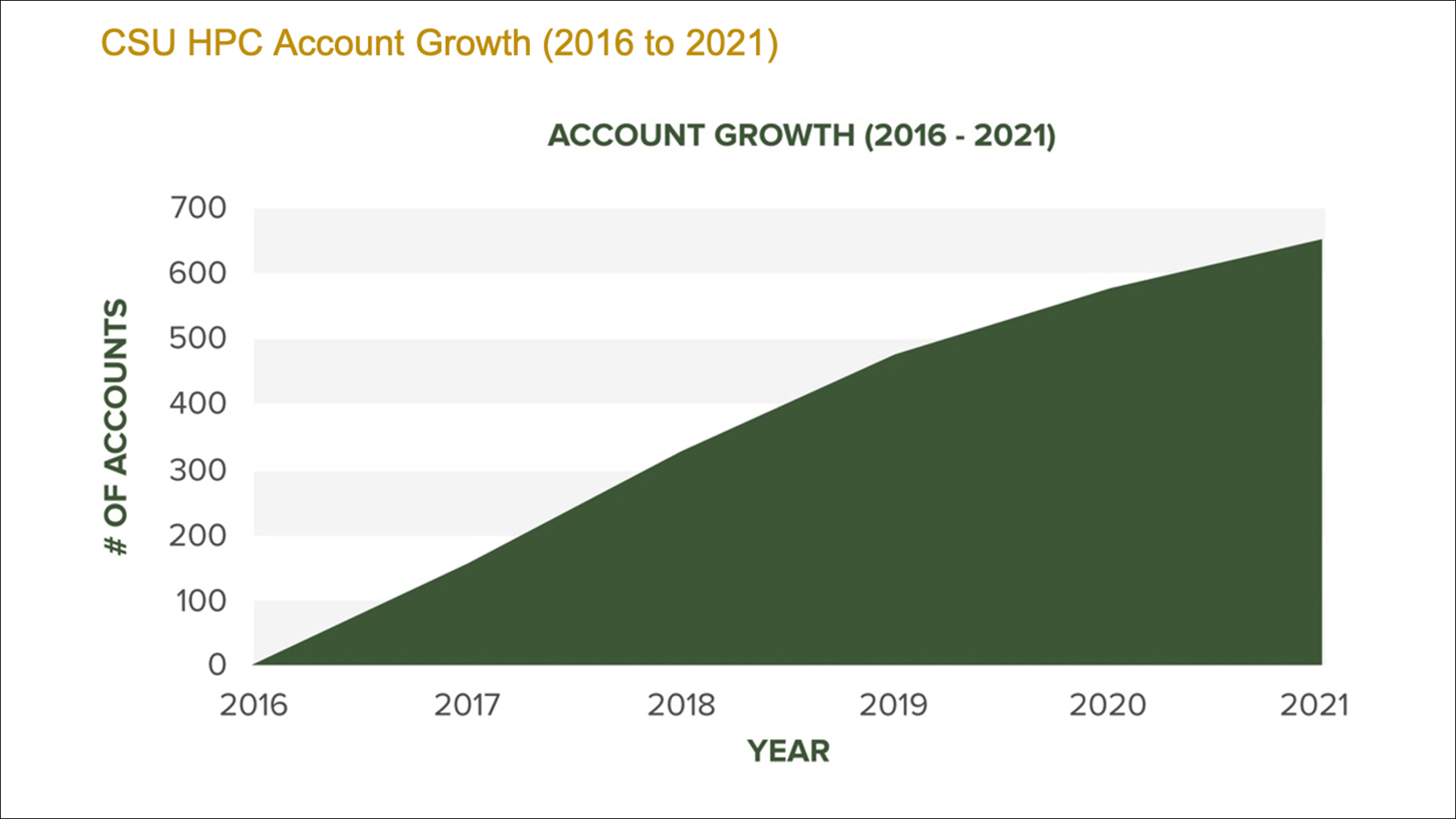High-performance computing
The past, present and future of high-performance computing at CSU story by Tim Schommer, Division of IT published Aug. 28, 2022It’s a regular occurrence when driving down the highway: The traffic slowly grinds to a crawl. Is there an accident ahead? Is it construction? What is the best detour to take in a situation like this?
This is a challenge that the Colorado Department of Transportation is hoping that Colorado State University’s Zhenqiang Wang, a post-doc in civil engineering can help them solve. To do that, he must draw from a large pool of data that includes over 1,000 travel segments and produce a complex detour map that considers both single or multiple detours options, and then ranks them.
This is one of 37 projects at CSU that utilize the Summit High Performance Computing System, a robust data computing setup that has been advancing scientific discovery at the University since 2016.
Summit is a Dell HPC system with about 12,000 cores on commodity multicore nodes, 10 GPGPU nodes, and five high memory nodes (2TB RAM/node).
“That’s the equivalent storage and processing power of 1,500 MacBook Pros,” said Stephen Oglesby, Experience and Collaboration Cyberinfrastructure Facilitator at CSU.
Summit is a shared system between CSU, the University of Colorado Boulder, and the Rocky Mountain Advanced Computing Consortium. Previously, both CSU and CU Boulder each had smaller independent systems.
“That’s the equivalent storage and processing power of 1,500 MacBook Pros.”
—Stephen Oglesby, Experience and Collaboration Cyberinfrastructure Facilitator at CSU.
When both institutions realized their individual arrangements were becoming outdated, they quickly came to the realization that a cooperative approach to a new system would reduce their upfront cost, allowing them to invest in a higher capacity structure. By combining efforts across institutions and bringing in RMACC as a third partner, a collaboration was forged, increasing each institution’s ability to solicit for grants on a larger scale.
A history of progress
CSU’s history of HPC didn’t begin with the Summit system. After receiving a Major Research Instrumentation Program award in 2009, CSU implemented a Cray computer in 2010 that operated for almost a decade before being decommissioned in 2019. CSU expanded Cray in its last three years to serve a base of about 300 users. With the upgrade to the Summit HPC system in the years since, CSU’s user base has more than doubled.
“This is a clear indication of the high level of interest from CSU’s research community for expanding our HPC capabilities in support and advancement of CSU research,” said Oglesby.

Preparing students for the future
CSU’s commitment to advancing research doesn’t end with its current generation of researchers. Since 1998, CSU has been supporting aspiring computational scientists and engineers to conduct research using HPC by offering graduate-level high performance computing classes that are complimentary to computer science.
In Spring 2021, this course attracted students from eight fields, including Atmospheric Sciences; Bio-manufacturing; Civil, Chemical, Computer, Electrical, and Mechanical Engineering; and Mathematics. An online section is planned for part-time professional students, and for CSU Pueblo students. CSU also offers classes on Linux as a Computational Platform, and RNA-seq Data Analysis.
What’s next?
The Division of IT, CSU Libraries, and the Office of the Vice President of Research are working together through the Research Computing and Cyberinfrastructure unit to implement a next generation computing system called “Alpine.”
The new system will continue to be a shared arrangement between CSU, CU and RMACC with 1.3x faster cores, more cores, and faster storage speed than its predecessor. Simply put, this means more users, more access, and greater computation power. Taking into consideration input from students, staff and faculty, and lessons learned from Summit’s six-year run, the investment in Alpine has been tailored to maximize benefits to our Rams. Launching in mid-Fall 2022, Alpine will help to empower scientific discovery at CSU for years to come.